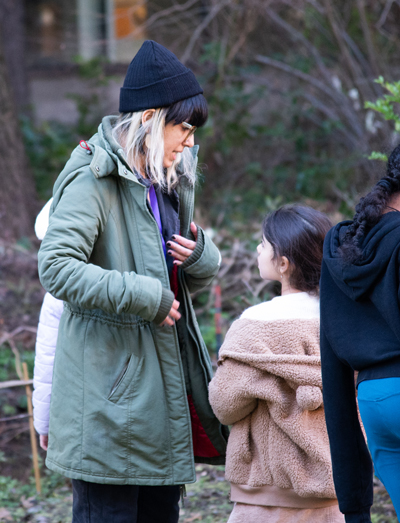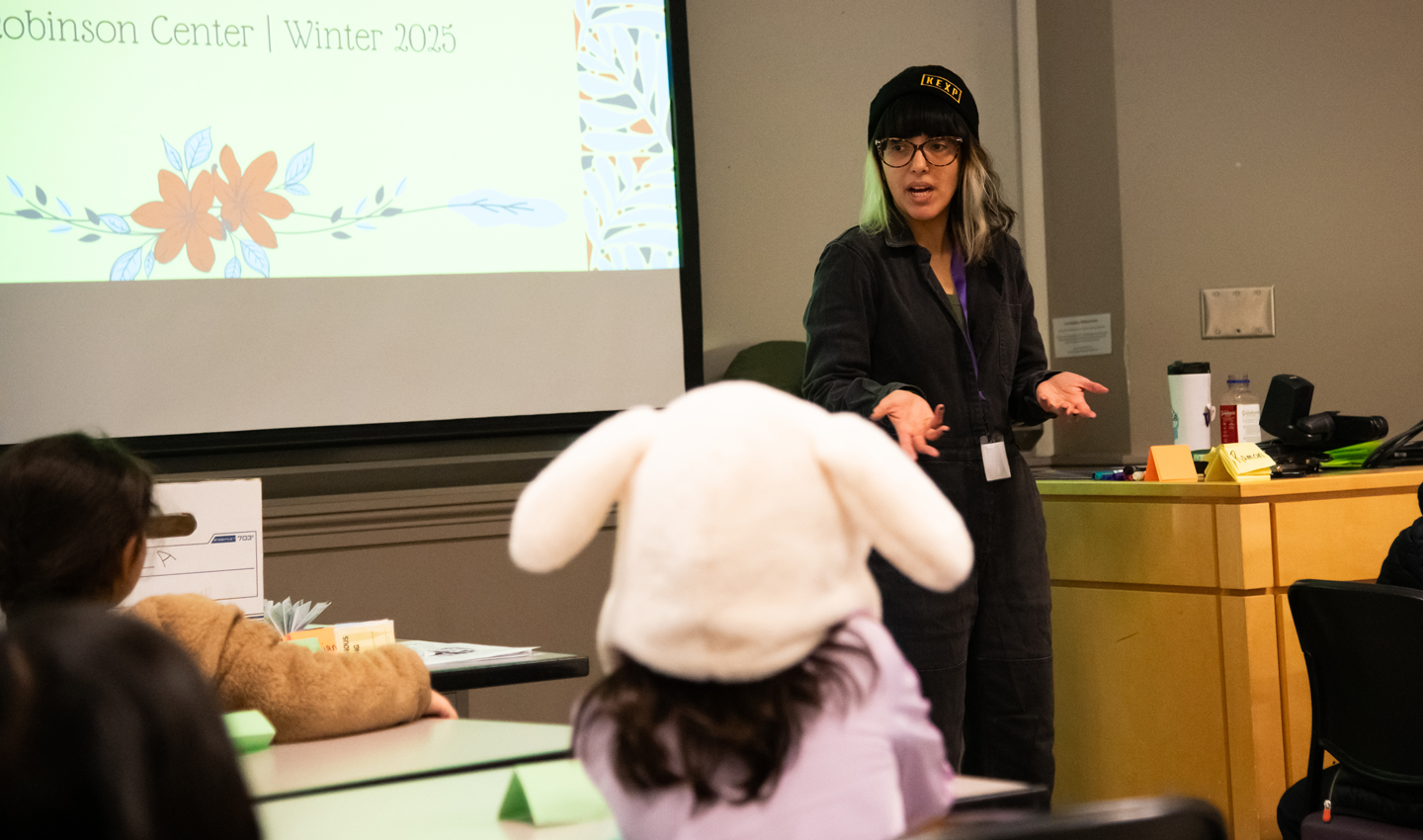In a complex world, educating children about adult issues like climate change may present a daunting challenge. However, for iSchool Ph.D. candidate Itza Carbajal, equipping youth with the skills to understand these topics is second nature.
This winter, Carbajal is spending her Saturdays teaching 3rd-5th graders about fashion and the environment through the University of Washington Robinson Center for Young Scholars. The Saturday Enrichment Program offers extracurricular learning opportunities for students in grades K-8. Now in her third year with the Robinson Center, Carbajal is teaching a class called Fashion and the Environment: A Climate Change Story.
Her research examines how young minds access and create memories, particularly those preserved in archival records like visual images or physical textiles — what she calls materialized memories. At this stage of her dissertation, she hopes this class can help her “look into how young people create and engage in their memories when it comes to the climate crisis and disasters.”
While fashion may not seem directly related to the environment, the fashion industry is a major contributor to the ongoing climate crisis. “The climate crisis is a result of a lot of human behaviors, and one of those behaviors is how we dress ourselves,” Carbajal said.

In the class, students learn about the process of producing fashion, both as a social and cultural construct. They also analyze the materiality of fashion, asking and answering questions such as, “What is it that we're wearing?,” “Where do our clothes come from?” and “How has that changed over the years?”
By asking these questions, Carbajal aims to understand her students’ decision making through their dressing behaviors and decisions, particularly as they begin to have more agency in their choices of what they want to wear.
Although the central topic of this class is fashion and the environment, the true focus comes down to storytelling. With her work in materialized memories, Carbajal is interested in discovering how her students will absorb what they learn and retell it to others. To facilitate this, she is incorporating historical records as a means of materialization including UW yearbooks, tree and garden walking tour zines, music videos and video games. Using yearbooks, for example, helps students assess what people in the yearbook photos are wearing and what that means for the communities of the UW, Seattle or even the Pacific Northwest. She explained, “I'm curious about this human tendency of wanting to share our interpretations, trying to share the story of what I see, how this makes me feel, and if I want to share this with others.”
This class provides young students with an opportunity to engage with topics that may seem intimidating and complex, but are vitally important to their education. Carbajal finds that adults tend to avoid these difficult conversations, while younger populations are often more willing to explore them. She notes that although children learn to survive from adult rules, they would most likely be capable of figuring it out on their own if the world weren't so adult-centric.
Carbajal believes that with proper guidance, younger students can approach these topics without feeling overwhelmed to the point of avoidance. “My idea of being an adult,” she says, “is hopefully to make the world a better place for the next group of folks.”
